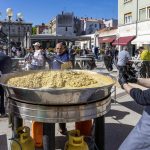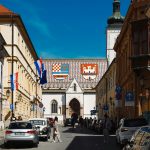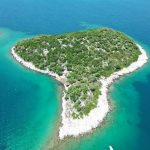February 3, 2020 – TCN is delighted to announce a new partnership with the Trogir Tourist Board to increase the visibility of one of Dalmatia’s true gems, the UNESCO World Heritage Site of Trogir and surrounding areas.
A challenge will not only be fun, but also a pleasure. When you have such a fantastic destination with so much to offer and stories to tell, the task becomes a lot easier. And the stories of Trogir are fascinating and numerous, as we will discover together in the coming weeks and months.

A destination which is not only rich in heritage, but exploring the best ways to utilise that heritage for better quality tourism. The recent rebranding of Trogir into the town ‘Marked by Masters’ was innovative indeed, and a truly spectacular day was had by all a few weeks ago at the launch, which you can read about here (and more in the promo video below).
As other coastal towns and cities have lost the artisans and craftsmen within the city walls (Dubrovnik no longer has any, for example), Trogir has several great stories of modern masters making their mark inside Trogir’s ancient walls today – fantastic authentic experiences which we will be documenting in the coming weeks (we already started with the coral jewelry genius of Misel).
There are so many other things to explore in Trogir, such as the surrounding vineyards, which are home to the original Zinfandel. But all that is to come, and we begin by getting to know the UNESCO town through its architecture through the eyes of our UNESCO heritage correspondent, Filipa Marusic.
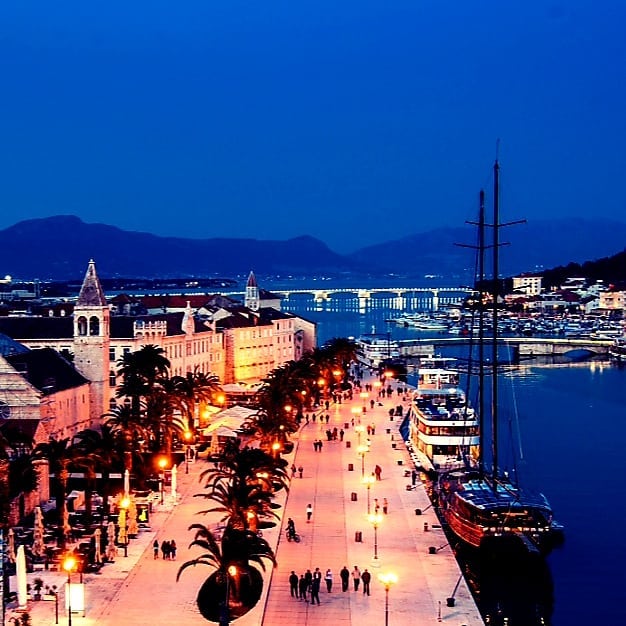
Croatia is blessed with no less than 11 UNESCO World Heritage sites, and few are as compact or spectacular than the old town of Trogir. The historic city centre is an excellent example of urban continuity and is a well-preserved medieval town built on layers of the Hellenistic and Roman city. Different rulers and periods have bequeathed many valuable buildings and fortifications. The historic town has numerous Romanesque churches and lovely Renaissance and Baroque buildings from the Venetian period. The influence of different cultures and times is visible in the whole town, and the city was added to the UNESCO list back in 1997.
The origin of the name Trogir dates back to the 2nd century B.C., which proves the ancient foundation of the town. The name means ‘goat hill’, which was probably related to the fact there were goats in the area. Additional evidence of the Greek presence is the Kairos relief, which is from the 3rd century B.C. – part of the permanent exhibition in a Benedictine monastery next to St. Nicholas church. The Kairos legend says that the god of the lucky moment is faster than the wind, and if you catch him by the tuft on this head, you will have your lucky moment and happiness throughout life.
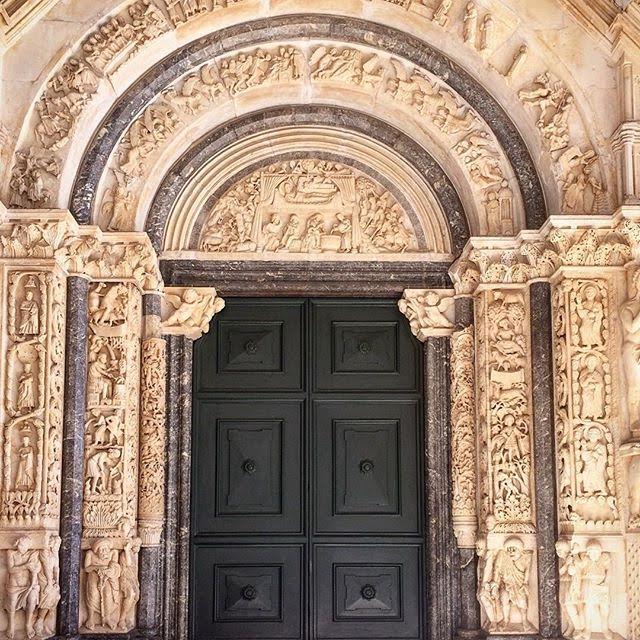
Different buildings from different times around Trogir city centre create a unique city centre complex where almost everything has its history. There are numerous sacral and residential buildings for the city complex.
The most attractive building is the Cathedral of St. Lawrence or – as locals call it – of St. John of Trogir. Its unique work of art from different art periods ranging from Romanticism, Gothic, Renaissance, and Baroque. It took four centuries to build, and building started around 1200 on the foundation of the early Christian Church and probably former Greek temple. The length of the construction can be seen on the bell tower. The first floor is Gothic; the second floor has the features of Venetian floral Gothic of the 15th century while the third floor has Renaissance elements and was completed at the end of the 16th. Different artists were working on each level of the tower.
When you are standing in front of the main entrance, there will be a stunning Radovan portal gate, which is the most famous monument from Romanesque times. The Radovan portal construction ended in 1240, and 50% is the work of master Radovan and 50% work of his students. The lunette shows the birth of Christ, and the arches show different scenes from Christ’s life. The portal has sculptures of lions on the left and right as guardians, and there are on each side sculpture of Adam and Eve. There are images of apostles and Bible motifs. Additionally, there are images of everyday life and agricultural work, depending on the seasons. The sculptures of the Saracens who attacked Trogir in 1123 are at the base as portal bearers. At the top of the portal there is the sculpture of St. Lawrence with the grill – The legend says St. Lawrence during his martyrdom said to his torturers “I’m well done, turn me over” and because of this he is the patron saint of the chefs and comedians.”
When you go past the portal and enter this three-nave church, the first thing you can see are narrow Romanesque windows and three semicircular apses in the east. The central nave is the location for the main altar with ciborium and sculptures of Our lady and angel Gabriel, made by master Mavro in the 14th century. In front of the sculptures, there are carved wooden choir seats work of Ivan Budislavić from the 15th century. In Baroque times, the main altar got a new marble tabernacle and statues of Blessed John and St. Lawrence. In the Church, the central place is for the crucifix painted by Blaž Jurjev Trogiranin in the 15th century. The Church has various paintings that show images from saints’ lives. Another sight is a large wooden candelabrum in the form of a Greek cross of the 16th century, which was powered with oil before, but which has since been electrified. The Church had its first organ in the 15th century and then again during Baroque times. The new organ came to the church mid-20th century, but it was built partially from the old pipes.
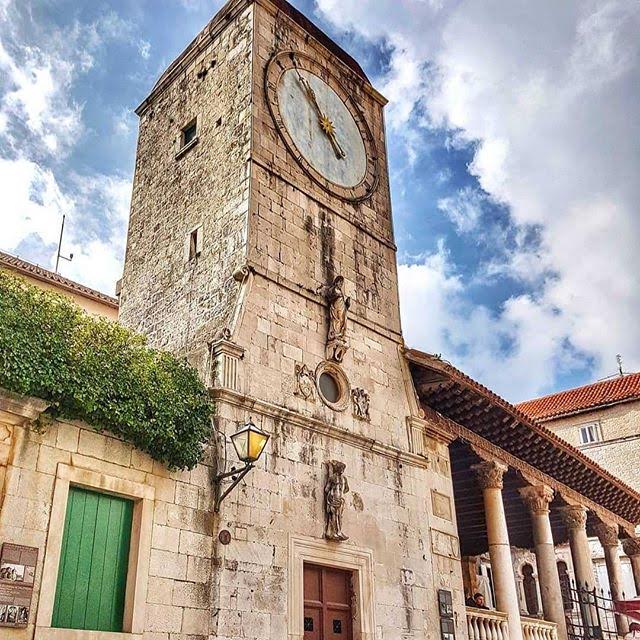
Another work of art is the Blessed John’s Chapel, built in the 15th century according to the draft of Niccolò Fiorentino, with contributions from Andrea Alessi and Ivan Duknović. They used ancient inspiration to make the chapel (Jupiter’s temple in Split). The reliefs are showing the winged boys with torches that represent the afterlife. Life on earth is presented with apostles led by Christ, while round windows are a symbol of the sun. The cassette ceiling symbolizes the vault of heaven, and the central medallion represents God. The Blessed John’s Chapel has marble angles made in baroque style. There is a sarcophagus with the remains of the Blessed John.
The treasury of the cathedral is the place for golden and silver objects, church clothes, written documents. The Trogir diocese was abolished in 1828 and is from then part of Split-Makarska archdiocese. The sacristy has a library and coat of arms of the Trogir bishops.
In the vestibule in front of the church there is the 15th-century baptistery made partially by Andrea Alessi. There are famous reliefs made by him like Christ’s Baptism located above the entrance and St. Jerome’s cave inside the baptistery. The baptistry has a rectangular ground plan with cassette vaulting on the ceiling. There are images of angels with a wreath probably made under the influence of Niccolò Fiorentino. In the centre, there is the stone baptistry covered in wood in the upper part.
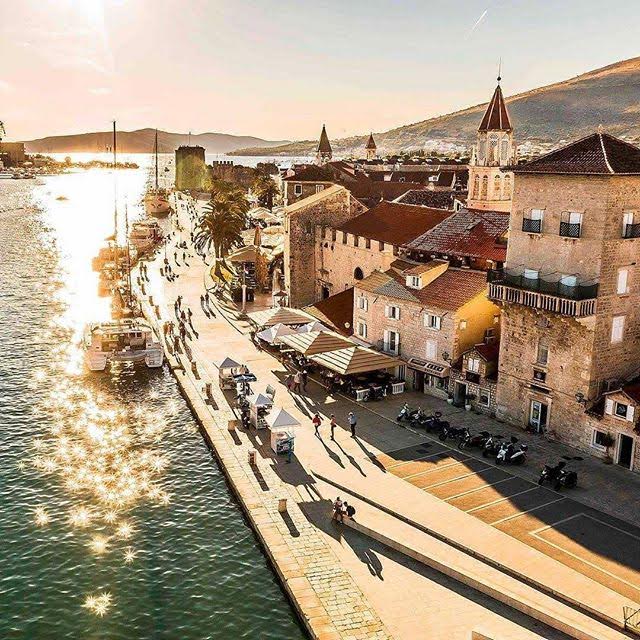
Other sacral buildings include Saint Dominic monastery, Our lady of Mount Carmel Church, All Saints Church, Saint Peter’s church, Saint John the Baptist church, Saint Sebastian Church, Saint Barbara Church, Saint Michael Church and Church of St Nicholas.
Saint Dominic Monastery dates back to the mid-13th century. There was a single nave church with a Gothic tower in the 14th century. There are several works of art in the monastery and Church as old as from the 14th century.
The Church of Our Lady of Mount Carmel dates from the Middle Ages and was expanded in mid-17th century.
All Saints Church was renovated at the end of the 17th century and is between the Church of Our Lady of Mount Carmel and St. Dominic. As it was old, the Church was closed at the end of the 19th century, but from the second half of the 20th century, it is used as a gallery. Today it is a souvenir shop.
St. Peter’s church used to be within the Benedictine monastery intended for noble daughters. It was probably established by the wife of Bela IV who was hiding in Trogir in the 13th century. The monastery existed until the 18th century.
The Church of St. John the Baptist (13th century), at the time of construction, was an integral part of the men’s Benedictine monastery. It has the features of the Romanesque style, with one nave. In the mid-19th century, it was closed, and was a temporary stone exhibition. Nowadays, the church is place for the collection of church sculptures.
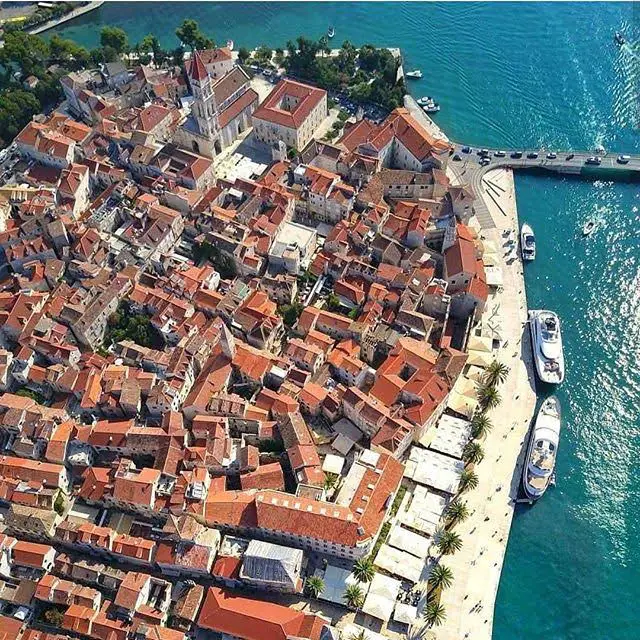
The Church of St. Sebastian is from the mid-15th century and was a votive church as a sign of thankfulness for salvation from the plague. It has a semi-circled apsis form turned towards the South, and with the entrance towards the North, since with its eastern wall, it leans on the neighboring Church of St. Mary, and instead of a bell tower, it has the city clock tower. The Renaissance front and the sculptures in the interior are a work of art of Niccolò Fiorentino. In the mid-19th century, it became a warehouse. Nowadays, it is fully renovated and is a memorial for heroes of the Homeland War.
Old Croatian three-nave Church of St. Barbara (St. Martin), with three semi-circled apses in the East, a bell tower in the middle of the dome and shallow niches in the sidewalls, was built in the early Romanesque style in the 11th century, with its northern wall leaning on the town loggia – the courthouse. In its construction, parts from the antiquity were used, in particular posts and capitals. From the second half of the 19th century, it was a warehouse, and at the end of the century was a depository of stone fragments. It was renovated on several occasions during the 20th and at the beginning of the 21st century.
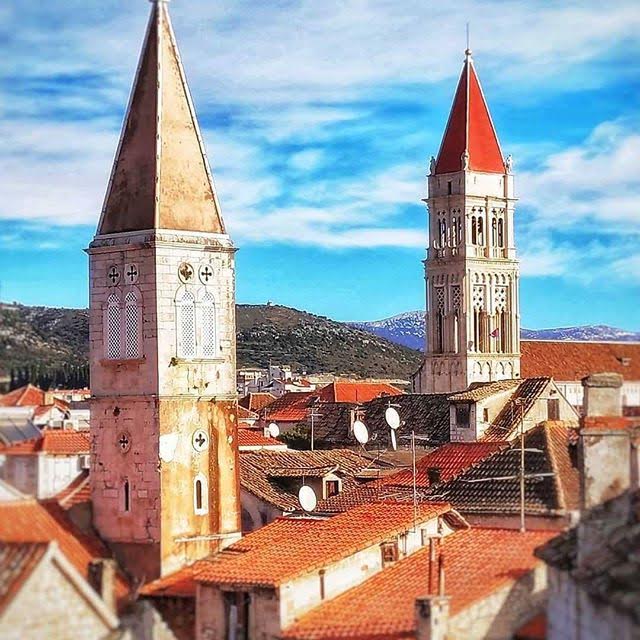
The bell tower of the Church of St. Michael is a remnant of a demolished church and monastery, destroyed in the Anglo-American bombing in 1944. The Church was established in the 14th century, while the monastery, intended for the female students, was founded in 1595. The French rule abolished monastery in 1806. Later, there was a public school on the monastery premises, while at the time of the First World War it was the soup kitchen for the poor.
The Church of St. Nicholas (and the Kairos art collection) was created on the foundations of older smaller churches and the southern gate of the antique town, with the stylistic features ranging from Romanesque period to Baroque. It is an integral part of the only preserved women’s Benedictine monastery founded in 1064, intended for noblewomen. The bell tower is from the end 16th century with lacy, stone grids, work of the stonemason’s family of Tripun Bokanić. The interior has Baroque style ornaments, with stucco decorations and portraits of the saints. On the southern wall of the monastery’s courtyard, there is the oldest Greek inscription built-in (2nd century B.C.) mentioning the names of people who performed public services. The courtyard is the place for a small stone exhibition from which one enters into the Kairos art collection, whose most valuable exhibit is the relief with the figure of Kairos, a god of the happy moment created in the period between the 4th and 3rd century B.C. In the exhibition, there are stone fragments found during archaeological research in the Church itself and heritage in paintings, silver, church vestments, manuscripts, etc.
In the historic city of Trogir, there are plenty of residential buildings and old palaces. We will have a look into Garagnin-Fanfogna palace, Ćipiko palaces, Town Hall, Lucić palace, and other houses from notable families during history.
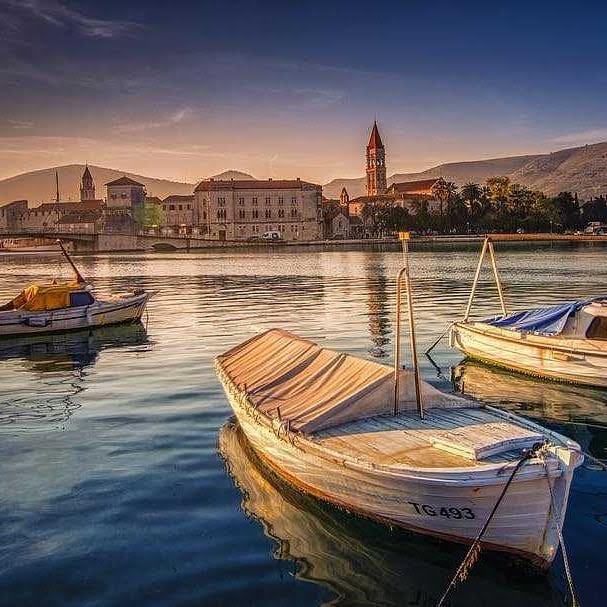
The complex of the Garagnin – Fanfogna Palace consists of two blocks of Romanesque and Gothic houses that in the second half of the 18th century became one bigger building. Today it’s the place for the Museum of the City of Trogir. The permanent exhibition of the city museum includes the Garagnin – Fanfogna library in the original interior from the early 19th century, the Archaeological collection presenting the earliest history of the Trogir area and the foundation of the town itself.
There is a collection of the cultural history from the Middle Ages and the Modern Age presenting the town history from the 13th to the beginning of the 20th century. The traditions related to everyday life from 17th to 18th century are in the living room of the Garagnin family. The museum has the stone exhibition where one can see a collection of stone monuments that showcase the artistic tradition of stonemasonry workshops in Trogir as well as the room with work of Ivan Duknović. There are also the oldest urban layers of the town with remains of the houses from the 2nd to 1st century B.C. Trogir Museum is also a home for Cata Dujšin Ribar Gallery and Zlata Radej.
The two Cipicco/Ćipiko Palaces, the large and the small ones, were created by connecting Romanesque buildings. The palace has a lot of artwork from artists from the 15th century, like Niccolò Fiorentino. Andrea Alessi, Ivan Dubković. There are both Gothic and renaissance decorations and architectural influence.
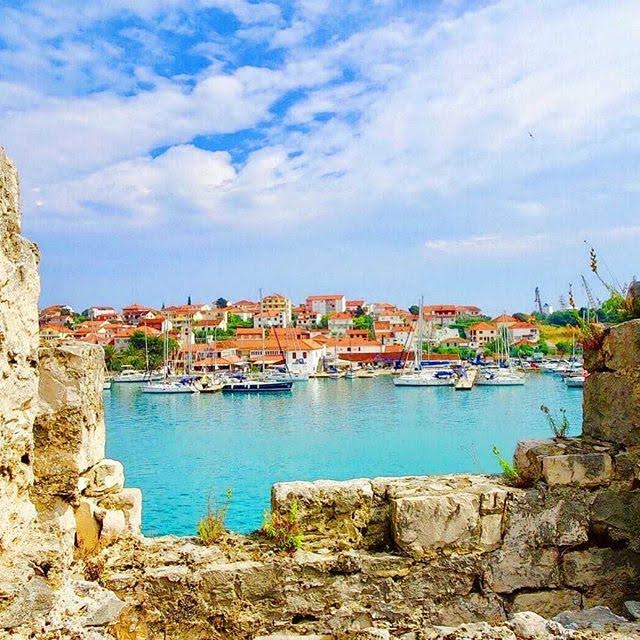
The Town Hall dates from the 13th century, and it was the centre of political power in Trogir for a century. It has kept its original purpose until today as it stayed the administrative centre of the town. It was also a theatre where noble families would mark their spots with emblems. During more recent reconstructions, people engraved all found emblems on city loggia.
There are several more palaces including Lucić palace – the birth house of the father of Croatian historiography, Ivan Lucić, located on the waterfront. Another palace is the Stafileo/Štafilić Palace situated along the central longitudinal street that following the direction of the antique decumanus (street in direction east – west). Then the group of Andreis houses located in the southwestern part of the town, near the Church of St. Peter, the group of houses of the Dragazzo family, the Berislavić house – birth house of the Croatian Ban and Bishop Petar Berislavić who history remembers as a courageous fighter against Ottoman invasion.
The City Loggia is situated on the southwestern side of the main city square, on the one side leaning to the Church of St. Sebastian – a tower with the city clock, and on the other side to the Church of St. Barbara. was built as a porch at the end of the 13th century. The 17th century stone table has its place in the loggia above which there is a renaissance relief of Niccolò Fiorentino with a presentation of Justice and city patron saints – St. John and St. Lawrence from the 15th century, with several subsequent interventions.
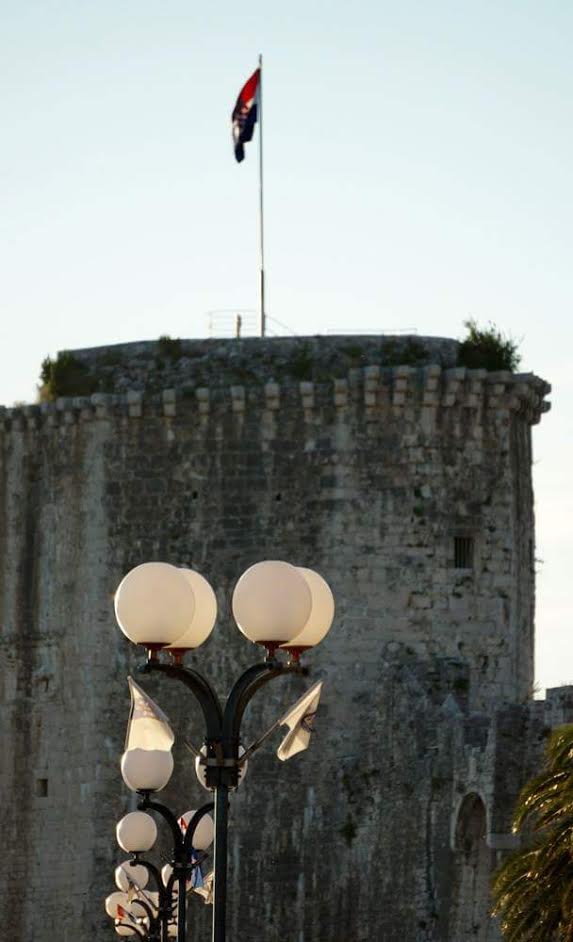
There was a statue of the Venetian lion of St. Mark, which locals removed like all the other lions in town in the 1930ies. On the southern wall of the city loggia, there is a relief of Ban and Bishop Petar Berislavić, a work of art of Ivan Meštrović from 1938. In the past, the loggia served as a courthouse and as a sales location and place where duke would speak to people. Today you can enjoy a capella klapa music during the summer. There is also the gallery of the art collection of sacral objects of the cathedral of st Lawrence. There are numerous works of art related to sacral architecture.
The small loggia situated to the East of the southern city gate was a resting area for travelers who were late to enter the town after the city gate would close. On the wall of the loggia the writing on the wall describes its purpose. It served as a tent to keep the sun away and shelter from the wind for the people of Trogir and visitors. Until recently, the small loggia was peškarija – a fish market, while nowadays, in the summer, it is a place for the souvenirs.
The Northern City Gate is a new city gate built in the 17th century, and today’s looks have from the 18th century. Above the door, there is the statue of St. John of Trogir, patron saint of the city of Trogir. The Southern City Gate is dating from the 16th century.
In front of the southern city gate, there is Štrandac – the flag stand which has changed its locations during history.
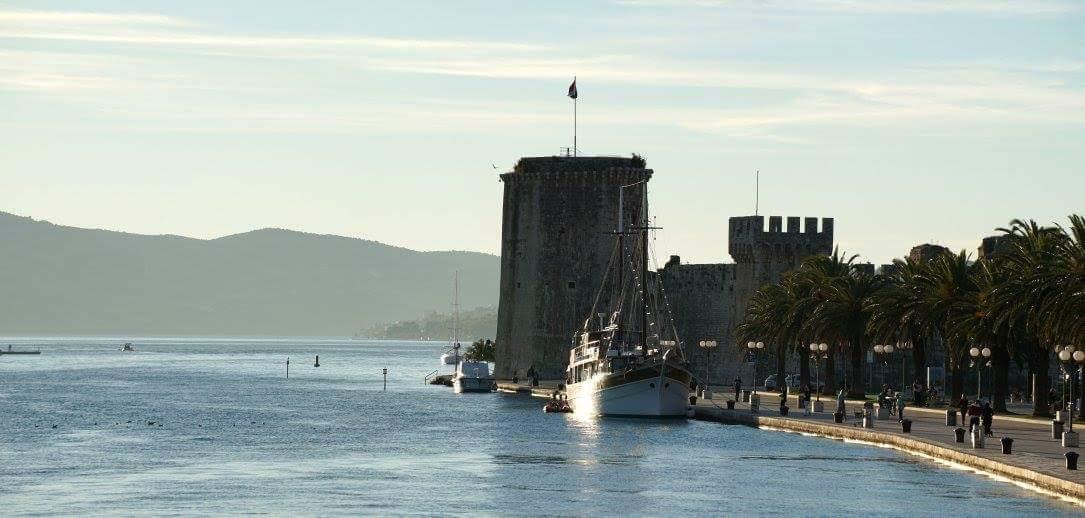
The Trogir historic city centre has two fortresses – Karmelengo and St Mark tower.
The St. Mark Tower circular tower is from the 15th century, and it was a defence point and a slaughterhouse until the second half of the 20th century, while today its home to Dalmatian music. Kamerlengo fortress was built in the 15th century after Venetian arrival to Trogir. The original purpose was to accommodate the Venetian army while today is the lace for different music concerts and events.
From all these buildings and monuments, it’s obvious Trogir is an exceptional example of the town that has continuity in urban development for centuries with a lot of representative artwork from Romanesque and Renaissance times.
Learn more about this lovely town in the Total Croatia Trogir in a Page guide and 25 things to know about Trogir, or visit the official tourist board website.
This article is produced in association with the Trogir Tourist Board.






